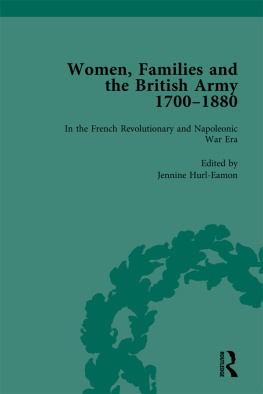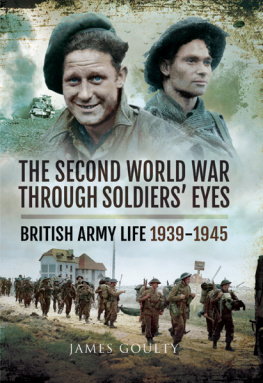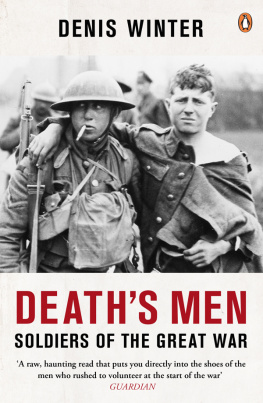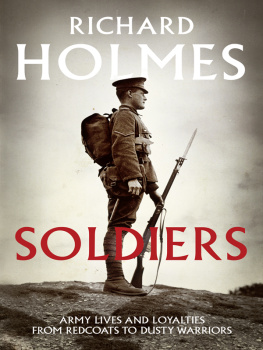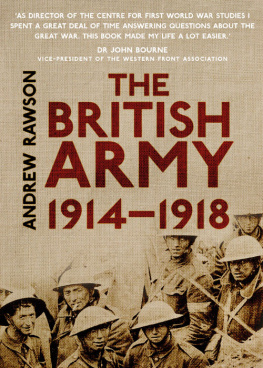WOMEN, FAMILIES AND THE BRITISH ARMY 17001880
WOMEN, FAMILIES AND THE BRITISH ARMY 17001880
Edited by
JennineHurl-Eamon
andLynnMacKay
Volume III
In Their Own Accounts of Service in the Napoleonic Wars Era
Edited by
Jennine Hurl-Eamon
First published 2020
by Routledge
2 Park Square, Milton Park, Abingdon, Oxon OX14 4RN
and by Routledge
52 Vanderbilt Avenue, New York, NY 10017
Routledge is an imprint of the Taylor & Francis Group, an informa business
2020 selection and editorial matter, Jennine Hurl-Eamon and Lynn MacKay; individual owners retain copyright in their own material.
The right of Jennine Hurl-Eamon and Lynn MacKay to be identified as the authors of the editorial material, and of the authors for their individual chapters, has been asserted in accordance with sections 77 and 78 of the Copyright, Designs and Patents Act 1988.
All rights reserved. No part of this book may be reprinted or reproduced or utilised in any form or by any electronic, mechanical, or other means, now known or hereafter invented, including photocopying and recording, or in any information storage or retrieval system, without permission in writing from the publishers.
Trademark notice: Product or corporate names may be trademarks or registered trademarks, and are used only for identification and explanation without intent to infringe.
British Library Cataloguing-in-Publication Data
A catalogue record for this book is available from the British Library
Library of Congress Cataloging-in-Publication Data
A catalog record for this book has been requested
ISBN: 978-1-8489-3594-5 (set)
eISBN: 978-1-003-01804-9 (set)
ISBN: 978-1-1387-6613-6 (Volume III)
eISBN: 978-1-003-01422-5 (Volume III)
Typeset in Times New Roman
by Apex CoVantage, LLC
Publisher's Note
References within each chapter are as they appear in the original complete work
CONTENTS
- PART I
Infantry Privates in Line Regiments - PART II
Infantry Non-commissioned Officers in Line Regiments - PART III
Riflemen - PART IV
Guardsmen - PART V
Artillerymen
- PART I
Infantry Privates in Line Regiments - PART II
Infantry Non-commissioned Officers in Line Regiments - PART III
Riflemen - PART IV
Guardsmen - PART V
Artillerymen
Guide
In addition to my co-editor and the staff at Routledge, I would like to acknowledge Florida State University Library Special Collections, especially Brittney Farley, for her assistance in acquiring a copy of the Recollections of Robert Eadie. I am also grateful to Tanya Kato from Special Collections, Honnold/Mudd Library, Claremont University Consortium, for helping me attain copies of William Brown and John Stevensons memoirs.
There was more continuity than change in British soldiers family experiences at the turn of the nineteenth century. Though mens pay had risen slightly in 1797, it still remained well below that of their civilian counterparts in labouring trades. At one shilling per day, soldiers wages were barely sufficient to cover their own needs, leaving nothing to help out a wife and family. The army cut soldiers pay back further with stoppages for things like pipe clay, used to whiten their uniform, and to purchase food to supplement insufficient rations. These stoppages could be so drastic as to reduce their net annual income to a mere 18 shillings.
A select number of permitted wives were then carried on the strength of the army, receiving half rations in return for performing services such as laundry and nursing to the regiment. This number varied depending on whether the men were on active campaign or serving in garrisons. Though in 1800 the Duke of York set an official limit of six women per company (roughly one hundred men), the actual number of wives allowed to travel on the strength continued to vary. Howard Clarkes analysis of embarkation returns from Cork has suggested that factors as simple as room on ships might have decided how many married soldiers could have their families with them. In September of 1793, seventeen transport ships were docked at Cork in preparation for embarkation. They served as interim barracks, holding 745 wives and 1,628 men, plus several hundred children, from four regiments. By the time the ships sailed for Sir Charles Greys expedition to the West Indies that November, the regiments had increased their complement of men by 935. This resulted in 392 women, and their children, being left behind.
The luck of those granted leave to remain on board and accompany the men to the West Indies was dubious, since it often amounted to a death sentence. The West Indies garrisons were notorious for the high mortality rates suffered by their occupants. Children were especially susceptible to the deadly pathogens that flourished in tropical outposts, made worse by the crowded conditions of barrack rooms. Given these circumstances, Roger Buckley accorded it a miracle that any infant survived. Despite the dangers of sea journeys, remote garrisons (in the West Indies and elsewhere), and war zones, most rankers wives preferred to be with their husbands than to be left behind in the British Isles.
While officers were able to return to Britain during the less active winter phases of the Peninsular campaign, the men in the ranks could not see their homelands and families until the cessation of hostilities. Even after Waterloo, men remained posted in France. It is thus unsurprising that some wives would do their utmost to join their husbands, whether permitted to travel on the strength or not. To be left behind meant that they had to solicit poor relief officials for aid. If such help was granted, wives and children often had to travel long distances to the parish where their husband had legal right of settlement. There was rarely any support from extended kin and Irish soldiers wives could not even turn to the parish. The most desperate women resorted to prostitution as a survival strategy. Even those on parish relief had to work for additional income, as public funds rarely covered even basic living expenses. Separation from a spouse could be regarded as worse than widowhood, because the existence of a living spouse prevented military wives from remarrying.
Rifleman Edward Costellos account of the wife who resorted to bigamous marriage in Portsmouth should be understood in light of the challenging economic situation of the women and children left behind at embarkation. Upon discovering that his wife had taken a new husband after he had been absent without word for a decade, Costellos sergeant friend accepted payment as a sign that he was reconciled to the new match. This was just one example among several written accounts of soldiers selling their wives in this period. In citing some of these, Charles Esdaile has considered it chattel slavery, without acknowledging E. P. Thompsons compelling arguments to the contrary.
It is important to note, however, that soldiers were one of the smallest occupational categories to engage in wife sale. Most military marriages likely ended due to soldiers death, or they simply dissolved during husbands lengthy absence, with nothing so formal as a wife sale to acknowledge it. Nonetheless, Costellos story hints at the possibility that some couples were successfully reunited at wars end. Soldiers sibling and filial loyalties defied similar obstacles, seen in the excerpt here from Robert Butler. Butler himself expressed some wonder at the fact that he and his three brothers, who had each soldiered in different parts of the world, had been preserved to unite in Scotland at wars end.


